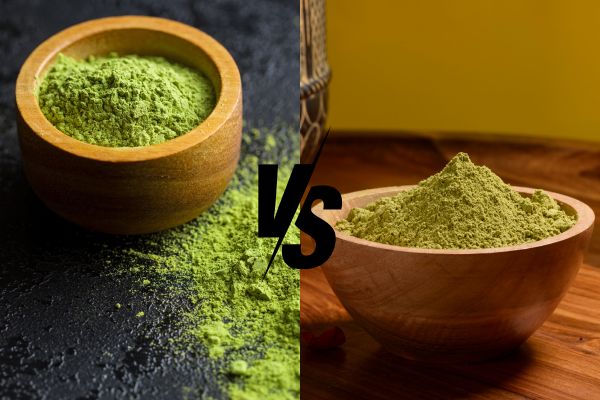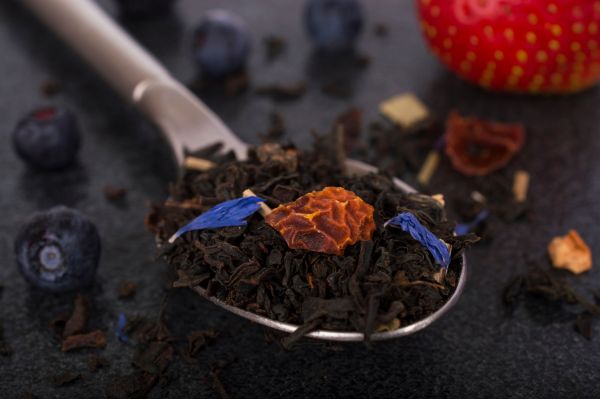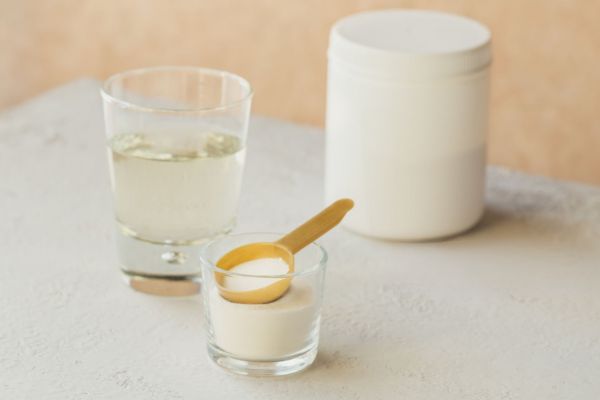Ready-to-drink milk tea is increasingly popular thanks to its convenience and variety. Have you wondered what the RTD milk tea production process is? Follow this article to find the answer.

Contents
Introduction
Milk tea has become among the most sought-after drinks today, especially among young people. In addition to tea shops, more and more ready-to-drink (RTD) milk tea products have been launched to meet the needs of hectic lifestyles. RTD milk tea still uses common ingredients like tea leaves, milk, and other flavors. RTD milk tea manufacturers have been constantly innovating and introducing diverse products with unique flavors. In this article, let’s explore the typical ready-to-drink milk tea production process.
Stage 1: Tea extraction
The main ingredient in making milk tea is tea leaves, usually semi-finished products in the form of dried tea. Dried tea leaves and water are quantified and quality-checked according to the required standards before production. Tea is extracted in 10 minutes at temperatures from 89 to 92°C. Water, after heating to the standard temperature, is pumped into extraction equipment, followed by dried tea leaves.
The extraction machine has blades that continuously stir to ensure even extraction and increase efficiency. The tea liquid and tea grounds are then poured through the filtering equipment. After separation, the tea liquid goes into storage tanks and is pumped to the next stage, while the tea grounds are collected and processed.

The extracted tea liquid is transferred to the filtration or centrifugal systems. For broken tea or dust, the tea liquid, after extraction, goes through a centrifuge to completely remove tea grounds and any impurities. Meanwhile, for whole-leaf tea ingredients, extracted products are poured into 200 mesh screening filtration and a 50µm bag filter system.
After that, the tea liquid is cooled to about 12 to 16°C and transferred to a buffer tank to stabilize the quality. It is then pumped through a 25µm bag filter system and passed through the centrifuge to remove all the small grounds and insoluble substances, ensuring clarity. At the end of the process, the tea is moved into the cold storage tank while samples are taken to check the quality. The standard Brix is usually from 0.5 to 0.8 for the green tea base and from 0.9 to 1.3 for the black tea base.
Stage 2: Mixing
The raw materials are mixed at high speed to ensure the uniform and then pumped through a 50 mesh filter. Stabilizers and refined extra sugar are dry-mixed at a ratio of ⅓. Then, gradually add the mixture, about 7 to 11 kg per minute, to the tank of 550 to 650 liters of 70 – 75°C and mix at high speed for around 10 minutes.
The water temperature inside the mixing tank is kept from 50 to 55°C. Then, the remaining raw materials are slowly poured into the tank at a speed of 40 – 55 kg per minute and circulating mixed for 20 minutes. The stirring blades are maintained to ensure an even mixing of ingredients. The purpose of this step is to completely dissolve, disperse, and homogenize the stabilizers, powdered materials, and sugar.
The combination then goes through filtration systems to remove the left substances and is cooled down to 10-16°C. Tea liquid from the cold storage tank is added to the milk liquid in the blending tank. The stirring blade is continuously operated for 10 minutes to ensure even dissolution of the mixture.

Stage 3: Homogenization and sterilization
Before starting the UHT sterilization process, the mixture is sampled and checked for physical, chemical, and sensory standards. After standardization, semi-finished products are pumped through a double filter system with 100-300µm filter mesh size to ensure they are free of impurities and other objects.
The mixture is then heated and pumped into a homogenizer with a pressure of 200 bar, a secondary pressure of 50 bar, and a temperature of 60-70°C. It is further heated to the sterilization temperature, and the UHT process begins. The sterilization process is conducted at 137-142°C in 4 seconds. After that, the product temperature is reduced to 20-25°C and transferred to the filling system or sterile tanks.

Stage 4: Filling and packaging
Firstly, the packaging goes through the 35% hydrogen peroxide solution at 60-80°C to sterilize before entering the filling system. RTD milk tea at FGC uses 6-layer Tetra Pak boxes. Meanwhile, nitrogen gas is produced by PSA technology with more than 99% impurity. It is passed through a HEPA filter and sterilized at 330-450°C to eliminate microorganisms. In addition, the filling equipment is sterilized by hot peroxide gas and maintained in sterile conditions by hot air-positive pressure.
After the sterilization conditions are achieved, the products are poured into the packaging according to the prescribed quantity. Nitrogen gas is added to protect the milk tea inside and extend shelf life. The sealing process is also conducted in the sterile room. The weld, packaging quality, and tightness are thoroughly checked. If the products are substandard, the filling process must be stopped for correction.

Finished and qualified boxes are then printed with the production and expiration date code according to the factory standards. Milk tea cartons are filled with lids before entering the shrink-wrapping machine. Products packaged in Tetra Pak boxes are usually shrink-wrapped with 4 boxes per pack. Finally, workers pack them into cartons of 6 packs (24 boxes), stack them on pallets, and store them in the warehouse.
Explore Aseptic filling process at FGC:
Conclusion
Raw materials, such as tea, milk powder, sugar, and flavors, need to undergo many stages to become a finished ready-to-drink milk tea. The main steps include tea extraction, mixing, sterilization, filling, and packaging. At FGC factories, each stage is strictly managed to ensure consistent product quality. With cutting-edge equipment and a stable ingredient supply, FGC is confident to meet the requirements of every customer.
About Future Generation Co., Ltd
We are FGC, the leading tea and beverage exporter in Vietnam and one of the biggest tea suppliers in the world. Our tea products are diverse in types, grades, and production methods. We provide customers with Loose tea (such as Black tea, Green tea, and Oolong tea), Herbal tea (such as Rose tea, Chamomile tea, and Lotus tea), and Specialty tea (such as Matcha), RTD Tea, and Tea Bags. Our mission is to become Vietnam’s leading healthy beverage company.
We ensure stable tea sources for domestic markets and exports with vast high-grown tea farms and available herb gardens. Our tea gardens and factories also meet international standards such as ISO, HACCP, KOSHER, HALAL, etc. In addition, we constantly innovate our machinery system, strengthen production capacity, and increase productivity. We also provide private label and customized packaging services for small and medium enterprises.
If you are a tea distributor, tea importer, teashop manager, or even tea lover, we are committed to being your prestigious tea source supplier in Vietnam!
Contact
Address: R4 building, Office Quarter 02, Royal City, 72A Nguyen Trai St., Thanh Xuan Ward, Hanoi.
Phone: +84 24 73 000 125/ +84 24 73 063 369
Mail: info@vietnam-tea.com
Website: https://vietnam-tea.com/
Facebook: https://www.facebook.com/fgcvietnamtea
LinkedIn: https://www.linkedin.com/company/fgcvietnamtea/
Alibaba: https://fgcvietnam.m.trustpass.alibaba.com/










